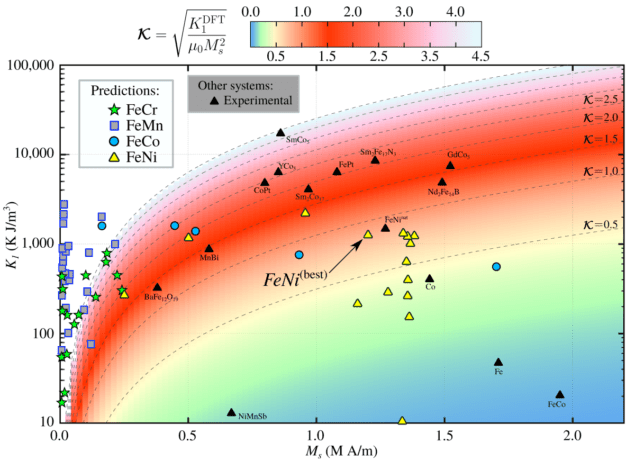
José Flores-Livas at Sapienza University of Rome has developed a methodology to predict the properties of magnetic systems using ab initio methods.
The research is reported in full in Journal of Physics: Condensed Matter, published by IOP Publishing – which also publishes Physics World. In this interview Flores-Livas describes that work.
What was the motivation for the research?
The motivation was to develop a computational algorithm based on structure prediction methods for a class of materials that have been poorly studied by the community due to their complexity: magnetic materials.
These are a broad set of materials characterized by the presence of an electron spin-degree of freedom. Within this general classification of magnetic materials, there are two large subdivisions: soft and hard magnetic materials. Soft magnetic materials do not stay magnetized, while hard magnetic materials remain magnetized. Hard magnets (or permanent magnets) are essential components in modern technologies, used in many electrical and electronic devices from computers, appliances to medical equipment. But they are also crucial in emerging applications, for instance; in electric vehicles and wind turbines.
The problem is that we depend primarily on three classes of permanent magnets. One of the aims of the work was to further gain insights into the delicate balance between the crystalline structure of of permanent magnets and their magnetic properties.
What did you do in the work?
Our research consisted of combining the minima hopping method (for structure prediction) with state-of-the-art first-principles magnetic calculations to scan for potentially new types of permanent magnets.
We faced many technical constraints. The size of simulation cells, convergence problems, and the complexity of the materials was always a significant restraint. This was a computational/theoretical work in which we had to make several approximations and consider simple, well-known cases, gradually working up to the most challenging magnetic materials. One innovative part of the work is how we combined two-level (spin and spin-unpolarized) calculations to overcome the demanding computational overhead. Another point that makes the work interesting for other researches is how it was automated, which provides reliable results within the same theoretical footing for a large number of magnetic systems. In this research, we investigated binary phases made of 3d-transition metals, such as FeNi, FeCo, FeMn and FeCr.
What was the most interesting and/or important finding?
One of the most striking results, apart from the developed computational machinery, was the fact that we could predict an exciting phase of FeNi. There has been much speculation about the tetrataenite phase of FeNi showing important capacities as a hard magnet. However, this phase is only found in meteorites, and experimentally it has been elusive to synthesize in laboratories.
In this work, we report a crystalline structure that has lower energy that the tetrataenite phase and has a saturation magnetization (Ms) of 1.2 M A/m and a magnetic anisotropy energy (MAE) above 1200 k J/m3. This compares with the state-of-the-art hard magnet Nd2Fe14B (Ms of 1.28 M A/m and MAE of 4900 k J/m3).
Theoretically, this system could be a good candidate for permanent magnet applications, especially considering it is free of rare-earth metals and made of abundant elements. Thus, the outcome of our research is appealing for experimental colleagues to explore further this low energy polymorph of FeNi.
Why is this research significant?
The research is significant because it shows it is possible to “access” magnetic materials from the computational point of view. There is a misconception in the community that first-principles calculations fail entirely to describe these systems. While this is well founded for a specific type of interaction (strongly correlated systems) there are other types of systems that are magnetic and can be accurately described using Kohn-Sham density functional theory.
We hope that this work will further ignite research in magnetic materials, from theory to computational developments to further experimental investigations. An essential part of this research is the transferability of the computational methodology to other types of applications. In future, we foresee the study of topological materials given rise to magnetic anisotropy energies.
What do you plan to do next?
As mentioned before, the study of topological materials and magnetism promises a vast niche for discovering exciting phenomena. However, in the short term, what we plan next is to extend our study to materials showing anti-ferromagnetism.
However, a series of developments must be conducted before reaching that stage. For instance, we need to find a way to reduce the computational overhead further and find a smart idea for initializing antiferromagnetic solutions without the use of large supercells.
This is the next step of our research, and we hope soon to approach this challenging problem.
The full results of the study are reported in Journal of Physics: Condensed Matter.



